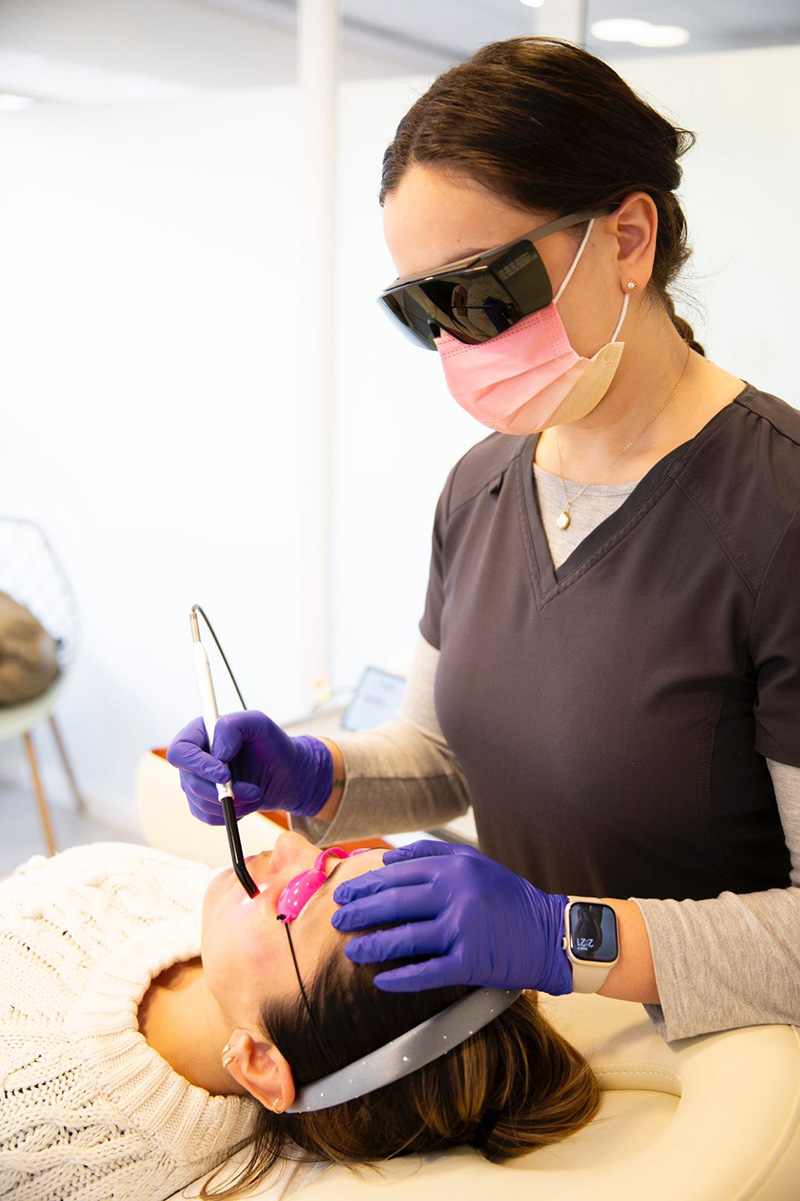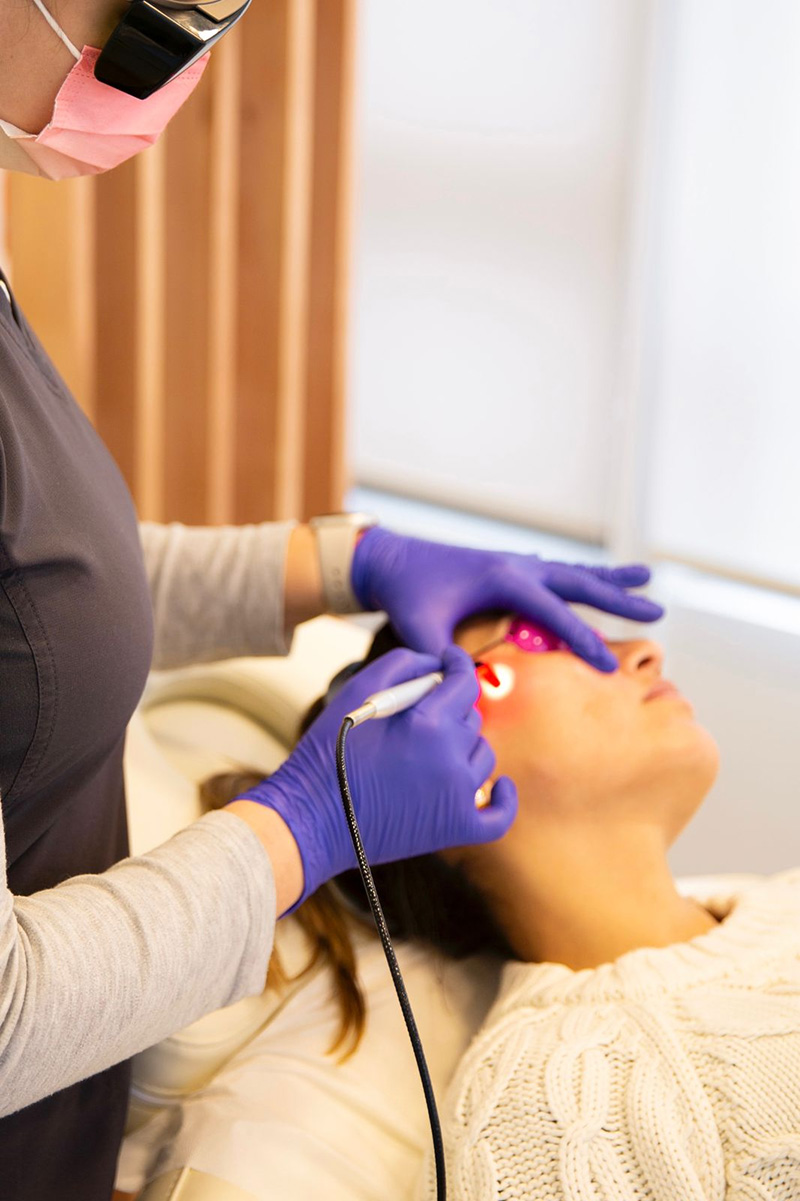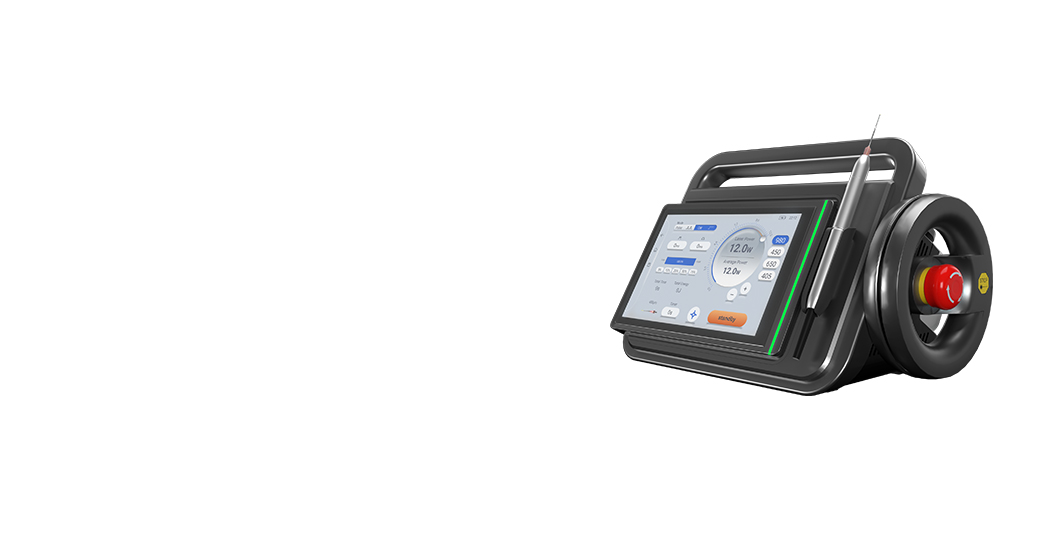Principle
The main principle of LLLT, photobiomodulation, centers on using light energy to stimulate cellular activity, leading to increased ATP production, reduced inflammation, enhanced tissue repair, and pain relief. This non-invasive therapy leverages the biological effects of light to promote healing and improve cellular function.
Operation
During an LLLT session, 650nm laser emitted by Pioon dental laser is applied directly to the skin over the affected area. The light penetrates the skin and is absorbed by cells and tissues beneath, initiating the biochemical reactions that contribute to healing and pain relief. Treatment duration and frequency vary depending on the condition being treated and specific patient condition.
Advantage
Laser therapy has been demonstrated to reduce pain and inflammation. One of the most prevalent musculoskeletal ailments is temporomandibular joint disorder (TMJD). Low-level light speeds up the body's normal healing process without burning the skin. Chronic and recent injuries can be successfully treated with LLLT. LLLT is a fantastic, healthy, natural, and effective alternative if you are sensitive to or allergic to harsh medications


General Precautions
-
Proper Equipment Use:
Ensure the use of certified laser equipment and follow the manufacturer's instructions. The wavelength, intensity, and treatment duration should match the specific treatment requirements.
-
Appropriate Protective Measures:
Use suitable eye protection (such as laser safety glasses) during treatment to prevent eye damage from the laser. Ensure both the patient and the operator wear protective eyewear.
-
Clean Treatment Area:
Make sure the treatment area is clean and dry to avoid infection and improve treatment efficacy.
-
Avoid Direct Eye Exposure:
The laser beam should not be directed at the eyes to prevent vision damage.
-
Regular Calibration and Maintenance of Equipment:
Regularly calibrate and maintain the laser equipment to ensure its stable performance and safety.
Clinical Precautions
-
Patient Assessment:
Conduct a thorough assessment of the patient’s health condition and treatment needs before performing LLLT. Certain diseases or conditions (such as cancer or pregnancy) may require special attention or avoidance of LLLT.
-
Selection of Treatment Area:
Ensure the appropriate treatment area is selected and the treatment goals are clear. Avoid using the laser on areas with trauma, infection, or skin lesions.
-
Dose Control:
Strictly control the laser dose for each treatment session (including wavelength, energy density, and treatment duration). Excessive doses may cause tissue damage, while insufficient doses may be ineffective.
-
Treatment Frequency and Duration:
Schedule treatment frequency and duration reasonably based on the patient’s specific condition. Avoid over-treatment and allow sufficient time for natural tissue repair.



